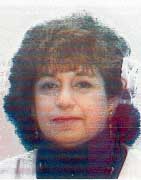IN THIS ISSUE
Types of Color Blindness: How They Affect Teaching and Learning
Improving Career Opportunities Despite a Learning Differnce
GREETINGS AND GOOD NEWS
Experts agree that a multisensory, structured, systematic phonic approach is the best way to teach students with dyslexia. The National Reading Panel has published its findings indicating that effective reading programs should include phonological and phonemic awareness, phonics, fluency, vocabulary and comprehension. (A free copy, useful in teaching children and adults, of Put Reading First: The Research Building Blocks for Teaching Children to Read, can be obtained at EdPubOrders@aspensys.com). The research recommends using a reading program for all students that includes a spelling component and multisensory reinforcement. It appears that what works for students with dyslexia also works best for all readers. Students with dyslexia, however, usually need different pacing with more time and practice and, in many cases, additional expertise from a reading therapist/educational specialist. The same general principles are effective for students whose first language is not English but who need to learn to read, spell and write in English. Teaching the code of the language is the solution. Reading is talk written down in code. By learning the code and how to use it, students have the necessary tools to decode (read) and encode (spell) words. Teaching the sound-symbol connections, blending sounds into words for reading, segmenting words into sounds for spelling, and learning the basic rules will integrate reading and spelling instruction. Combined with multisensory practice, learning is cemented into long-term memory. In pre-reading instruction, emphasis is on teaching students phonemic awareness, which involves the sound system of the language. Students need to know that sounds are represented by the letters of the alphabet, that sounds blended together make words and that words can be separated into sounds. Research indicates that the ability to play with words is the most reliable predictor of reading success. Students need beginning instruction in systematic, explicit phonics, therefore, letter-sound connections for letters and combinations of letters are directly taught and practiced in the context of words in word lists and in text. Card decks with sounds and with words can be used to help build mastery. Manipulatives for controlled reading provide an opportunity for practice to the beginning reader who is mastering an important skill. Students should be encouraged to use the letters to unlock the sounds of each word. An important component of reading programs is spelling. Spelling can be taught in conjunction with reading, moving from basic sounds, patterns and rules to more complex elements. Spelling is a multisensory activity involving three learning pathways‹visual, auditory and kinesthetic/tactile. Segmenting words into sounds, a phonemic awareness task, helps the student break up each word into recognizable parts and the sounds can be written in the correct sequence. Using a segmenting strategy, learners assign one sound to each finger, and then spell the sequence of sounds to create a word. Finger segmenting sends a strong message to the brain. Adults and teens can do segmenting on their fingers by applying pressure to the finger when the hand rests on the table or on the leg. As soon as they learn to segment they can do it vocally, then subvocally, then mentally. When teaching a phonic approach with a spelling component, the multisensory practice involved cements into long term memory the skills needed to read fluently with good comprehension and to communicate with others in writing. To provide an effective instructional program, every teacher needs to have knowledge and expertise in delivering an alphabetic-phonic approach. Without this, students lack the firm foundation needed for reading success. Teachers often need to develop new instructional approaches. They need the time and opportunity to understand the structure and rules of the English language, phonemic awareness and multisensory instruction as well as the specific strategies and techniques that make learning effective for students learning to read, write and comprehend English in print. Since this is often not a part of teacher preparation, it is necessary for districts, schools or individual teachers to seek out the training, professional development, and the tools, curricula, that will fill in the gaps for learners who need to know the structure of the language in order to manage written language skills. About the Author Arlene Sonday is a Founding Fellow of the Academy of Orton-Gillingham Practitioners and Educators. She is an instructor at Fairleigh Dickinson University, New Jersey, and Hamline University, Minnesota; a member of the Advisory Council, Scottish Rite Children's Learning Centers; past Vice-President, The International Dyslexia Association; author, the Sonday System Learning to Read, a reading/spelling curriculum, www.sondaysystem.com; and consultant for the software program, Ultra Phonics Tutor, www.prolexia.com. |

